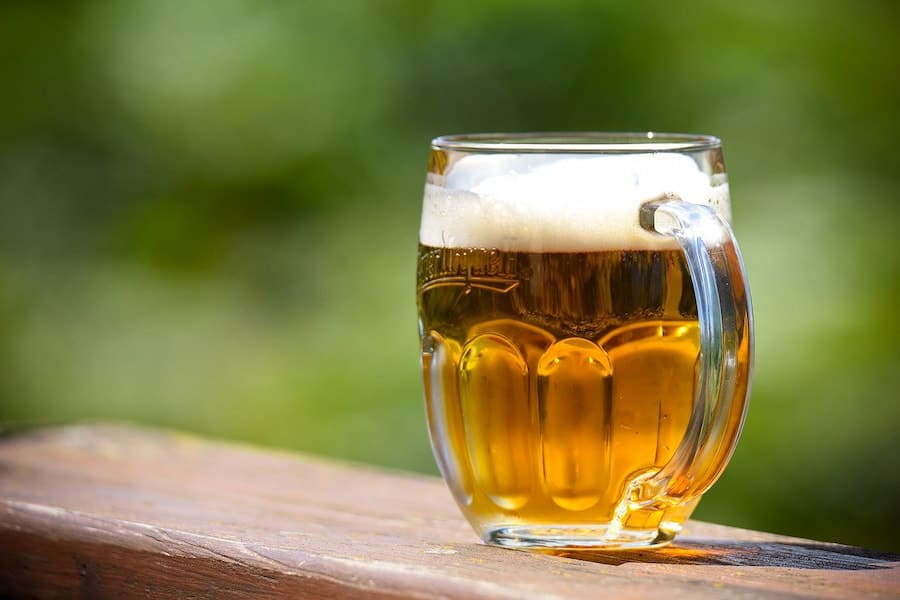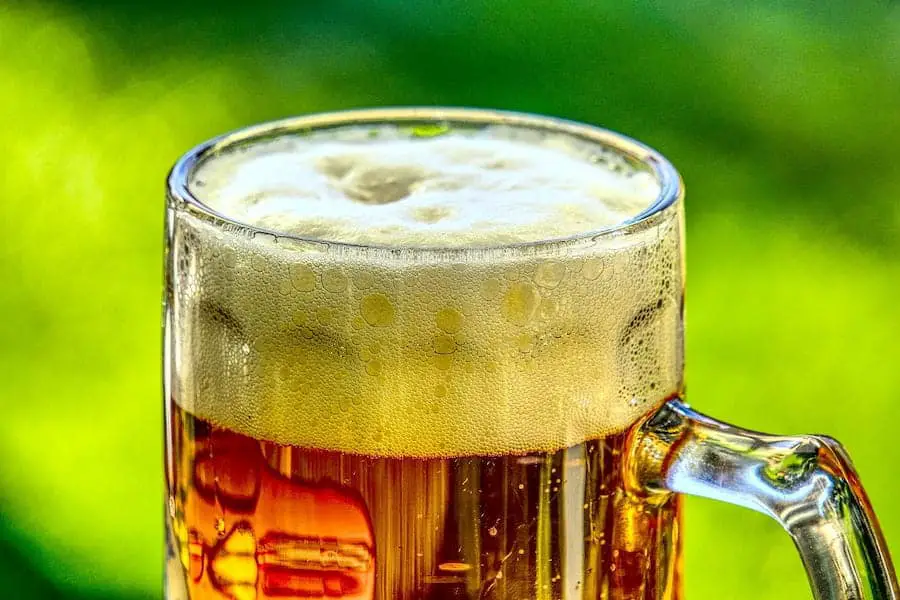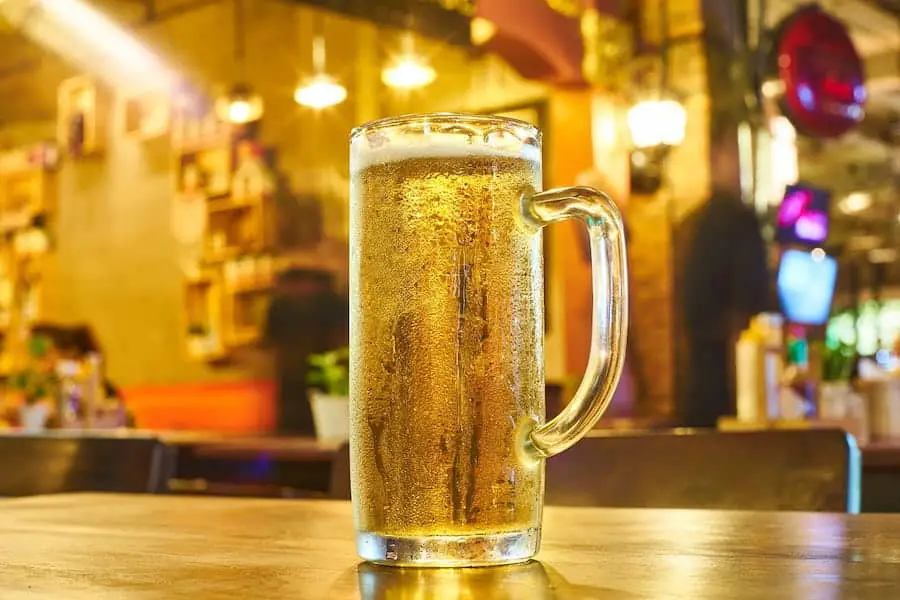If you buy something through a link in our posts, we may get a small share of the sale.
There are various types of craft beers in the world today, all of them with their individual great tastes. Describing the individual taste of each beer could turn out to be quite a difficult task. However, it is not as hard as it seems. Read on to discover the secrets of how to describe beer like a pro.
Contents
How To Describe Beer
To describe beer properly, you first have to start with the basics. In the beer world, this would entail the different kinds of beers, and the major differences between them. There are two basic types of beers: ales and lagers.
Being able to tell these two kinds of beers from each other via their appearance, taste, and smell would act as your first step in mastering how to describe the numerous types of beer that fall under these two categories.

Beer Characteristics to Take Note While Describing Beer
All beers are made up of four major characteristics – the way they look, the way they taste, the way they smell, and the way they feel. Each product has its own unique components which determine its appearance, aroma, taste, and feel.
To figure out these characteristics in any beer, all you need are four out of your five senses – your eyes, nose, mouth, and tongue. Here, let’s take a closer look.
Taste
Not only is tasting the most effective way of describing beer, but it is also the most interesting because it involves putting your tongue to use. From the very first sip, you can tell whether a beer is sweet, bitter, or somewhere in between. The taste of a beer is determined by the quantity of ingredients used to make it.
For instance, if a beer is sweet, then it has a higher malt to hop ratio. If it is bitter, it has a higher hop to malt ratio, and if it is sweet, then it has a balanced malt-hops ratio. However, other factors can decide the sweetness or bitterness of beer, such as added sugars or flavors.
Beer could be described to have a light and refreshing taste, or a heavy and intense taste. It could also have a flavor that is predominant over others or a blend of several different flavors that give it a compound taste. All of these simply depend on the ingredients used, and the manner in which they are used.
Smell
The smell of a beer is determined by the combination of ingredients used in making it, mainly hops, malt, water, and yeast, which determines the by-products created during the fermentation process. Aside from alcohol and carbon dioxide, some other molecules are produced when sugar is broken down, and these molecules contribute to the aroma of the beer.
For example, esters give fruity aromas to beer, ketones give beer a buttery, honey-like aroma and phenols give beer a spicy aroma. Additionally, the type of hops used, plus how and when they are used play a huge role in the aroma of beer. Hops are capable of giving beer fruity, floral, earthy, or even grassy scents.
Finally, the kind of malt used during brewing could give beer any aroma, ranging from coffee and caramel to roasty and nutty. Generally, darker malts give off heavier smells than lighter malts.
Mouthfeel
The mouthfeel of a beer is the sensation that it leaves in your mouth both before and after it has been swallowed. The mouthfeel of a beer is usually determined by its density or thickness (body), its level of carbonation, and the aftertaste it leaves.
The body of a beer can be rated as thin, medium, or full, depending on how heavy or weighty it feels. Also, the amount of carbonation a beer has can either make it feel flat and unsatisfying (low-carbonation), smooth and silky (medium carbonation), or fizzy and refreshing (high-carbonation). Too much carbonation could make beer taste sharp or harsh.
The aftertaste of beer refers to the taste it leaves after being swallowed. The aftertaste could be thin -almost imperceptible- or heavy. Also, it could be a flavor that lingers longer than others or it could be a totally new taste.

Appearance
The general appearance of beer has to do with its color, transparency, carbonation, and head. The color largely depends on the malt used in making it. Ideally, the lighter the malt grains, the lighter and more transparent the beer turns out to be, and vice versa. This explains why some beers are light yellow, while others are almost black.
More often than not, beers that are opaque have a heavy and richer taste, while transparent beers are associated with a lighter, refreshing taste. Additionally, the amount of carbonation a beer has affects how well it pops when poured with a faucet. While some beers are very fizzy like soda, others simply have a slow-moving bubble stream.
Carbonation also determines how much head – the white foamy substance that sits atop the liquid- a beer would have. Beers that are heavily carbonated produce a lot of head when poured in a glass, while beers with little to no carbonation barely have any head, and could be described as flat.
Words to Describe Beer Like a Professional
The words for describing beer may differ as a result of the present state of the beer; warm or cold because this could alter the individual perception of major factors like the aroma and taste. However, more often than not, the words used to describe beer are generally categorized under color, transparency, carbonation, head, aroma, taste, and feel.
Color
Since the color of malts used commonly determines eventual beer color, darker malts would result in a darker beer color and vice versa. Most beers come in general shades like bright or dark, and more specific colors like brown, gold-red, and amber.
Transparency
Similar to coffee, the nature of the transparency of your beer would be determined by the duration that you roasted the ingredients for. A longer roast would typically result in an opaque liquid, less roasting may cause the beer to appear hazy, and minimal roasting would result in a transparent or clear liquid.
Carbonation
Carbonation is a natural process during beer production. The amount or nature of resulting carbonation is determined by how much sugar you put in just before bottling. As a result, your beer may end up having any of the following features:
- Crisp
- Frothy
- Fizzy
- Bubbly
- Flat
- Zippy
- Spritzy
- Pinpoint
- Low carbonation
- Highly carbonated
- Sparkling
Head
The head refers to bubbles that rise to the surface mainly composed of carbon dioxide. Depending on wort protein, hop residue, and yeast present in the beer, you may describe the head as thin, frothy, full, dense, or thick.
Aroma
The aroma boils down to the quantity of hops, malt, yeast, as well as other ingredients that are included during the brewing process. While there is a range of aromas that may result, the following are more common:
- Floral
- Fruity
- Malty
- Toasty
- Roasty
- Sweet
- Caramel
- Floral
- Herbal
- Spicy
- Citrusy
- Coffee
Taste
The uniqueness of beer taste can be traced to the combination of malt, hops, yeast, water, and carbonation. Alterations in the brewing process may affect the taste as well. Generally, beer could either taste bitter, balanced, sweet, sour, strong, coffee-like and chocolate.
Feel
The feel is determined by the body, carbonation, finish, as well as proteins and residual sugars from the malt. You can commonly describe the feel as light, juicy, heavy, watery, thin, milky, or sharp.

How to Get Better at Describing Beer
While learning the words and knowing the different types of beers might help you get a grip on describing beer, they are not enough to make you sound like a professional. Remember, communicating to your readers or audience how a beer tastes or feels is more important than just knowing the terms.
In essence, if you only know the words, without understanding how best to use them, you just might end up confusing your audience, or worse, looking like a clown to the real experts. The good news is that there are other ways through which you could garner knowledge that would supplement the words you now know.
Reading Reviews
To get better at describing, you should try reading reviews written by Cicerones about different beers. While reading, it is important to pay attention to the way the terms are used to describe the product. Doing this would not only put you in the mind frame of professionals, but it could also help you write an astonishing review someday.
Reading Beer Labels
Here is another practice that lots of beer enthusiasts do not pay attention to. The information breweries provide on the bottles of their beers is there for a reason -to enable their consumers to know what to expect from the beverage by informing them about the ingredients present in it.
Reading the label of the beer helps you to know what flavors are most likely present even before tasting, thus giving you an edge in the description of the product.
Visit Local Breweries
Taking periodical visits to breweries in your neighborhood, and participating in tours of the building and equipment could go a long way in improving your knowledge about the beer-making process. With increased knowledge comes the ability to describe these products like someone who knows about it.
Adequate Tasting
This is perhaps the most important thing to do while aiming to describe beer. Tasting is the only way that you can get to know a beer beyond what it looks and smells like, and like it or not, you are going to have to do lots of it.
While tasting, you should ensure that you take notes. This would make for easy comparison between similar products.
Conclusion
Describing what a beer looks, smells, or tastes like is not as difficult as most people make it to be. All you have to do is know the right terms to use, read the right beer reviews written by professionals, and ultimately, taste as much as you can. Follow the tips written above to get better at describing beer like the best Polish beer or the best Chinese beer and many other kinds of beer .

